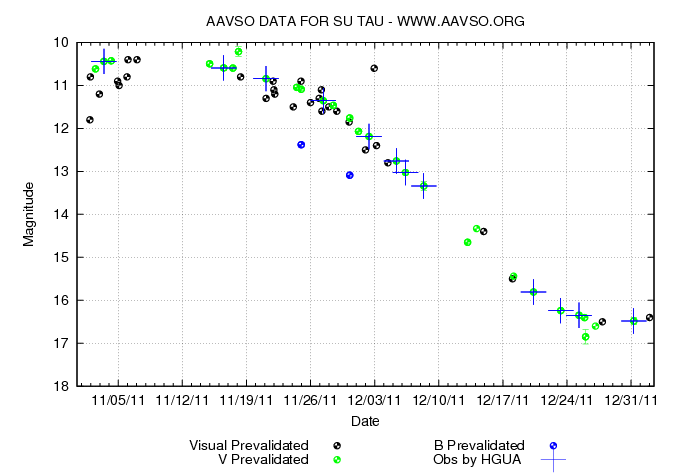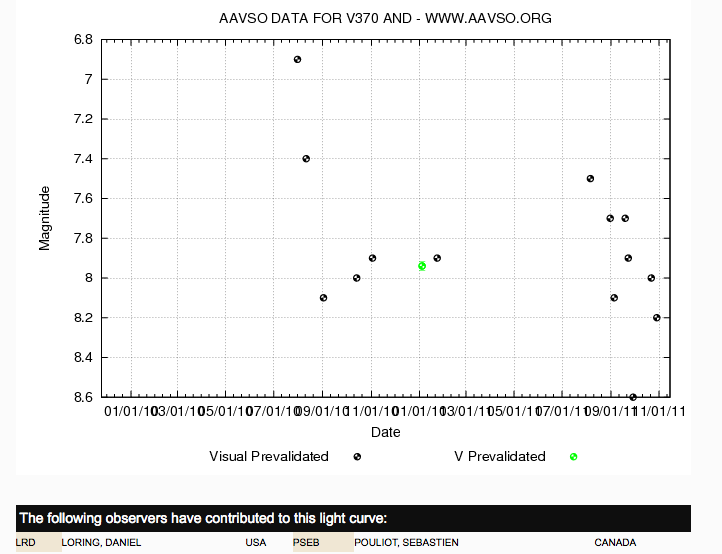Lydia Ceraski discovered 219 variable stars (or 180 – the literature disagrees somewhat). Among them are important ones such as SU UMa, RV Tauri and T UMi. Despite that, not much is known about her. She graduated from the Petersburg Teachers’ Institute and was married to the astronomer Witold Ceraski.
Witold Ceraski (1849-1925) became an astronomer at a time when the introduction of photography and photometers were changing the way astronomers aqcuire photometric data. Coming into astronomy in the 1870’s, he began his career by photographing the sun and doing stellar photometry with a Zöllner photometer, the topic for his doctoral dissertation. Stellar photometry would remain his main interest. His observations spanned some 36 magnitudes, since he even measured the magnitude of the sun.
In 1890, he was appointed director of Moscow observatory. During his reign, the observatory was rebuilt, the photographic capabilities were expanded, and new instruments were added, among them a 15 inch astrograph. A type of astronomical team work developed. Plates were exposed by assistant astronomers, and then analyzed by Lydia Ceraski, and discoveries were published by the director, Witold Ceraski who oversaw operations. That was how the astronomical division of labour was set up back then; observatory directors often reported the results of assistant astronomers and similar staff. This does not mean that Lydia Ceraski was uncredited by other astronomers for her discoveries, quite the opposite:


Photographic technologies changed the everyday work-life at the observatory, not only in Moscow but throughout the world. Data became more mobile and could be analyzed during the daytime by other staff than the ones that manned the telescopes at night; this led to an increase in astronomical data and discoveries. New types of staff emerged that worked with analysis of plates rather than at the telescope; Lydia Ceraski was one of them.
In 1898, Lydia Ceraski found a variable in Auriga on plates taken by Blažko. In March and April of 1898, it was 8.9 mag, but half a year later it was invisible even in a quite big telescope, Witold Ceraski wrote in a paper dated 16/28 October 1898 (Russia was still using the Julian calendar).
Astronomers at the Yerkes observatory were following variables, especially those that were suspected of having deep minima, and they put Lydia Ceraski’s find on their programme. In the winter of 1899-1900, using the Yerkes 12 and 40 inch refractors, Edward Emerson Barnard and J.A. Parkhurst could follow it as it reached a minimum of around 15th magnitude early in March. Parkhurst continued to observe the star at Yerkes with a wedge photometer, and used his observations together with those in the literature to determine the period to be 276 days; the star was now called W Aur.
Later on, W Aurigae was found on objective prism survey plates to have an emission line spectrum. Also, it was discovered to be a tight visual double by Paul Couteau; in 1979 he measured the separation between the two components with the Nice 20 inch refractor to be 0.”16.
W Aurigae is presently at or near a minimum. Nowadays you don’t need to be Edward Emerson Barnard or J.A. Parkhurst and observe with a 40 inch refractor to follow this mira through its minimum; a moderate size amateur telescope with a ccd camera will do.
Update: W Aur is not identical with Cou 1725; Simbad has changed the identification; Cou 1725 is, instead, identical with HD 281114.
 Svensk AmatörAstronomisk Förening
Svensk AmatörAstronomisk Förening






